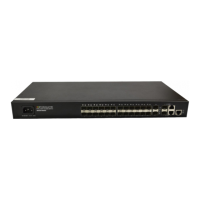Link Aggregation Configuration
Chapter 7. Link Aggregation
Configuration
7.1 Overview
7.1.1 Introduction to Link Aggregation
Link aggregation means aggregating several ports together to form an aggregation group,
so as to implement outgoing/incoming load sharing among the member ports in the group and
to enhance the connection reliability.
Depending on different aggregation modes, aggregation groups fall into two types: static
LACP and dynamic LACP. Depending on whether or not load sharing is implemented,
aggregation groups can be load-sharing or non-load-sharing aggregation groups.
Figure 7-1 Network diagram for link aggregation configuration
For the member ports in an aggregation group, their basic configuration must be the same.
The basic configuration includes STP, QoS, VLAN, port attributes, and other associated
settings.
STP configuration, including STP status (enabled or disabled), link attribute (point-to-point
or not), STP priority, maximum transmission speed, loop prevention status.
QoS configuration, including traffic limiting, priority marking, default 802.1p priority, traffic
monitor, traffic redirection, traffic statistics, and so on.
VLAN configuration, including permitted VLANs, and default VLAN ID, tag vlan list for
hybrid port and allowed vlan list for trunk port.
Port attribute configuration, including port rate, duplex mode, and link type (Trunk, Hybrid
or Access). The ports for a static aggregation group must have the same rate and link type,
and the ports for a dynamic aggregation group must have the same rate, duplex mode (full
duplex) and link type.

